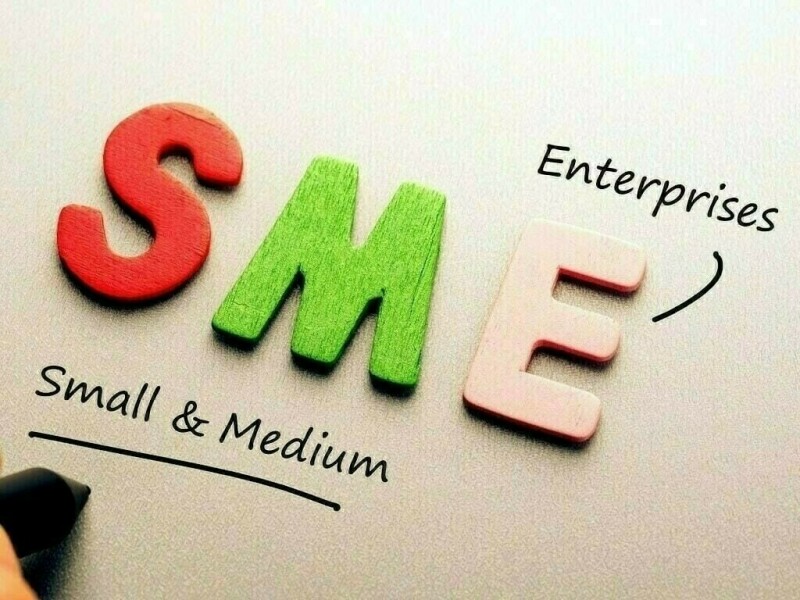LAHORE: The Federation of Pakistan Chambers of Commerce & Industry Businessmen Panel (BMP) has said that unreliable internet and digital payment barriers have slowed down the growth of the small and medium-sized enterprises (SMEs), as they have been facing serious challenges in their attempt to tap growing global market.
The FPCCI former president and BMP Chairman Mian Anjum Nisar, observed that despite having an annual growth rate of 17%, with non-textile exports and online businesses slowly gaining traction, fundamental obstacles like disruption in internet and lack of consumer trust are slowing progress.
Referring to a report, Mian Anjum Nisar said that Pakistan’s digital payment adoption has improved, with figures showing 84% of in-store mobile payments in FY24, but online transactions remain a challenge. Most Pakistani online shoppers, especially those in urban areas, continue to prefer cash-on-delivery, reflecting deep-rooted scepticism about online shopping. This has been compounded by several high-profile cases of undelivered products, which further erode customer confidence.
Experts argue that the absence of secure, user-friendly payment systems and proper infrastructure is holding Pakistan’s e-commerce potential back. Countries like India and Bangladesh, with strong mobile payment systems such as UPI and bKash, have seen substantial growth in their digital markets.
The BMP Chairman said that Pakistan’s e-commerce sector was valued at $7.7 billion in 2024, with retail e-commerce accounting for $5.4 billion, according to a report of PCMI.
Anjum Nisar said that in addition to payment system issues, Pakistan’s internet infrastructure is another major hurdle. Ranking 97th globally in mobile internet speed, Pakistan’s connectivity is far behind its regional counterparts, with rural areas suffering from even worse connectivity issues. This not only affects website access but also delays product uploads leads to lost sales and cancelled orders.
Despite government initiatives like the Digital Pakistan Policy and the National E-Commerce Council, which are aimed at bridging these gaps, progress remains slow. The country’s tax incentives for IT exports and new conversations with global payment platforms like Google Pay have seen limited success. The lack of access to digital marketing workshops and e-commerce tools outside major urban centers further limits growth for rural entrepreneurs.
Experts agree that, for Pakistan to capitalize on the global e-commerce boom, basic infrastructure improvements such as reliable internet access and affordable logistics must be prioritized. Without these foundational changes, SMEs will continue to struggle in an increasingly digital world, risking their position in the growing global market. This growth is driven by a young, tech-savvy population and the rise of business-to-consumer (B2C) and business-to-business (B2B) platforms such as Daraz, Alibaba and Shopify. For SMEs, which make up over 90% of Pakistan’s businesses and contribute 40% to its GDP, going digital is not just an option, it is now becoming a survival strategy. Yet, many business owners say the path to success is far from smooth.
Today, 60% of our sales come from overseas Pakistanis in the Middle East and Europe. “However, customers abroad want to pay through PayPal, which is not available here. SMEs have to use bank transfers, which take days in process or opt for cash-on-delivery, which sometimes leads to order cancellations,” they added.
According to PCMI, in Pakistan 75% of online shoppers prefer cash-on-delivery. This phenomenon is still common as it was 10 years ago. While the digital payment volume, according to figures quoted by the State Bank of Pakistan (SBP), jumped to 84% in FY24, most of those were in-store mobile payments and not online sales.
Economists argue that without secure, user-friendly payment systems, e-commerce growth will stay limited. “Pakistan’s Raast system is a good start, but it needs to scale faster,” they added.
The internet itself is another stumbling block. Pakistan ranked 97th globally in mobile internet speed in February 2025, with an average speed of 25.39 Mbps, far behind India, ranked 20th with 144.33 Mbps and Bangladesh, at 87th place with 37.98 Mbps, according to Ookla’s Speedtest Index. In rural areas, the problem is even worse.
Such decade-old issues put Pakistan’s SMEs and their online presence at a disadvantage compared to regional neighbours. India’s e-commerce market, worth $123 billion, thrives on cheap data and widespread digital literacy, while Bangladesh’s $7.5 billion sector benefits from tax breaks for online exporters and a robust mobile money ecosystem.
Government initiatives, like the 2019 Digital Pakistan Policy and the National E-Commerce Council, are aimed at bridging these gaps. Recent moves include tax incentives for IT exports and talks with global payment platforms. Google Pay has initiated its services from Pakistan recently but it is a one-way method.
Nevertheless, SME owners say progress is too slow. “We hear about workshops on digital marketing and B2B methodologies, but they are only held in big cities. How will a craftswoman in Swat or a farmer in Sindh learn these skills,” they asked.
Others demand better infrastructure. “The government should treat internet access like electricity or water, it’s a basic need for businesses now,” they said, neglecting the fact that electricity and water are still not available in far-flung areas. They added that logistics and shipping costs are also key issues both for domestic and global shipments. Apart from that, with low consumer spending due to hyperinflation, there is a need for SMEs and online businesses to find new markets to survive.
Copyright Business Recorder, 2025


